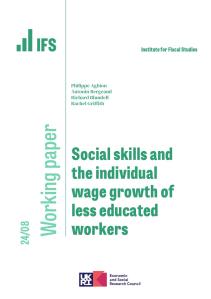On Tuesday (12 May 2020) the Chancellor, Rishi Sunak, announced an extension to the Coronavirus Job Retention Scheme (CJRS), which covers 80% of employees’ usual salaries, up to a cap of £2,500 a month, while they are furloughed. The extension comes in two parts: the CJRS will continue in its current form through to the end of July (rather than June); and it will continue from August until the end of October with furloughed employees still receiving the same capped 80% of salary, but with two key changes:
- Employees who move from furlough to part-time work will have part of their salary covered by the CJRS. At present the CJRS is only available for employees who do no work at all in the job from which they’ve been furloughed.
- Employers will have to bear part of the cost currently borne by the government.
Crucial details of these changes – such as how the support for part-time workers will depend on their earnings and hours of work, and how much of the cost will be borne by employers – are due to be announced by the end of May.
The Office for Budget Responsibility estimates that the extension from June to July will cost the government about £14 billion, bringing the total cost of the CJRS up to that point to around £63 billion. (These figures are reduced to £11 billion and £50 billion respectively after accounting for the amount recouped through tax on the CJRS-funded salaries, and there will be additional savings through lower spending on benefits for people who would otherwise have been unemployed). The Exchequer cost of the extension to the end of October is harder to estimate. It depends not only on the extent of economic recovery in that more distant period (which in turn will depend on how the lockdown is eased), but also on how much of the cost is transferred to employers and on the generosity of support for employees returning part-time – and how employers and employees respond to those changes.
Deciding when to withdraw support is a delicate balancing act
On the one hand, the government will want to preserve businesses and jobs that will be viable in the long term but are not in the short term. Some businesses may not be able to reopen safely for many months to come; some of those that do reopen will face temporarily depressed demand or disrupted supply chains. Some employees might find it difficult to return to work, because they or someone in their household is particularly vulnerable to COVID-19 or because they have caring responsibilities (such as looking after children who cannot go to school). Withdrawing support in such cases risks redundancies, firm closures and hardship – exactly what the CJRS is intended to minimise.
On the other hand, current levels of government spending on the CJRS cannot be sustained forever. Policy should not continue to discourage firms from restarting business and employees from resuming work once it is safe and viable for them to do so. And where employees will ultimately need to find other jobs (or just be better off doing so), the CJRS can slow down that adjustment, thereby also stifling the growth of new jobs during the recovery.
At any point in time, each of these pictures will describe different firms and workers. It will be impossible to withdraw support at exactly the right time in all cases, and errors will be made in both directions. Some extension of the CJRS beyond June is undoubtedly sensible. But the balance between these competing considerations will change over time and will vary across, for example, different sectors and different parts of the UK.
We do not yet know how quickly different parts of the economy will recover. That being the case, there are benefits to having flexibility to adjust the scheme according to circumstances. Mr Sunak said that the extension of the CJRS to the end of October will apply to ‘all sectors and regions of the UK’. It is not yet clear whether the details of the scheme (such as the amount of support available for part-time workers or the amount employers will have to cover) might vary across sectors/regions in that period, or whether the CJRS might be extended beyond October for some sectors/regions and not others. It would not necessarily be simple to adjust or withdraw the scheme differentially across the economy, but there might well be a case for doing so. Not all sectors, or all regions, or all types of employees, will necessarily be ready for a return to work at the same time.
Making employers share the cost is a way of scaling back government support which prioritises income protection for those furloughed over job preservation
Making employers face part of the cost of the CJRS will reduce its cost to the Exchequer and make firms less likely to keep employees furloughed longer than necessary, while ensuring that employees who do remain furloughed after July continue to receive the same level of support. However, it also increases the likelihood that firms that are not ready to re-employ all their staff by August (perhaps particularly in sectors such as travel, leisure and hospitality) will make those employees redundant rather than pay part of the salaries of non-working staff. It also exacerbates the potential for conflict between employers and employees, if employers want them to return to work while employees do not yet think it is safe (or still need to be at home with their children if they are unable to get childcare during August). All of these effects – good and bad – will of course be stronger, the bigger the fraction employers must pay.
An alternative way of scaling back the government subsidy would have been simply to reduce the rate of the CJRS, without obliging employers to top it up to 80% / £2,500 a month. That would reduce the likelihood of redundancies, but at the cost of reducing income protection for furloughed employees and therefore potentially increasing hardship for them. It would mean that the strengthened incentive for employees to return to work was felt by employees, rather than employers.
Extension to part-time workers laudable but brings challenges
The second change to take effect in August is to continue making CJRS payments for employees who move from furlough into part-time work.
This increased flexibility will encourage a return to work, and the associated reopening of businesses, particularly where full-time work would be unviable or undesirable because of continuing depressed demand or ongoing constraints such as childcare. And it will support the incomes of those returning to part-time work, who might be able to manage with 80% of their usual earnings while on furlough but would struggle with (say) 50% salary from working half-time without support from the state.
It will not act uniformly to boost the economy: some people who would have been able to return to full-time work will instead return only part-time, since their income might be almost as high while leaving them with more time available for other things.
To the extent that it leads people to work part-time rather than remaining furloughed, the change will save the government money (since the support will presumably be lower for those working part-time than for those not working at all). To the extent that it leads to people working part-time rather than full-time, it will increase the cost to the government.
The Chancellor’s announcement made clear that the CJRS will only be available for part-time workers if they are returning from furlough. This avoids creating an incentive for those currently working full-time to go down to part-time work, though in some cases reducing hours of work could be desirable and the restriction will make that difficult. The restriction also means, of course, that those who have already had their hours and salaries reduced – or will do over the coming months – will continue to get no help from the CJRS with their loss of earnings. More than a fifth of employees are working on reduced hours, according to Bank of England data for 24-27 April. Those whose salaries have been reduced along with their hours will remain one of the groups that largely fall through the net of the new government support schemes, and some will struggle to make ends meet.
Having decided to extend the CJRS to part-time workers, the government faces a big practical challenge. Support should (and presumably will) be withdrawn on a sliding scale between not working at all and working as normal. But to prevent firms from bringing employees back almost full-time while paying almost nothing (beyond the minimum employer contribution to the CJRS being introduced from August) and instead relying on the CJRS to pay their wages, the support for part-time workers would have to take account of their hours of work as well as earnings. Since hours of work are hard to measure and to monitor, that would make the CJRS more complicated to operate and even more vulnerable to fraud.
Advance notice welcome
The forward guidance provided by Tuesday’s announcement is welcome, helping firms and workers to plan their future activities and finances. For example:
- It gives employers notice that they will have to start paying at least part of furloughed employees’ wages from August onwards, and helps them to plan for whether, when and how they will re-open and bring furloughed employees back to work (including the new possibility of bringing back furloughed employees part-time with government support) – and to communicate their plans to employees, so that they can plan their time and finances too.
- It gives furloughed workers reassurance that they will continue to receive 80% of their usual earnings until the end of October if their employers keep them furloughed; that now puts them in a better position to discuss with their employer when they might return to work, whether they will ultimately need to get by with less income or find a new job, and whether it depends on how much of the cost of the CJRS the employer will have to bear after July, which will become clearer in the coming weeks.
- For those employees who will ultimately need to find new jobs, it gives them a time-frame for doing so.
No advance notice for the self-employed yet
No such guidance has been provided for the self-employed. Applications for the Self-Employment Income Support Scheme (SEISS) – roughly equivalent to the CJRS – opened on Wednesday, ahead of schedule. But the self-employed still have no indication of whether the payment they receive this month will be a one-off or whether further payments will be made in future if their business continues to be affected by COVID-19. It would be helpful for their planning if the government could soon announce what will happen to the SEISS beyond this month’s initial payment.
Stuart Adam, a Senior Research Economist at the IFS, said: ‘Continuing to support the wages of furloughed workers beyond June was undoubtedly sensible. By deciding that support will gradually be withdrawn from employers, rather than reducing the amount furloughed employees receive, the Chancellor is protecting the incomes of those furloughed and sharpening the incentive to firms to get back employees back to work, but also risking more redundancies where that is not possible. He should also consider reducing the very generous 80% replacement rate for employees.
Extending support to those returning to part-time work makes sense; the big challenge is how to do it in practice.
The advance notice this announcement gives to employers and employees will help them to plan. Similar forward guidance for the self-employed would be similarly welcome.’








